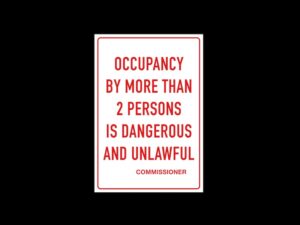It all comes down to being in the right place at the right time
How did neoliberalism go from being mocked to dominating economic policy? How did Martin Luther King’s non-violent protests during the Civil Rights Movement help put an end to Jim Crow Laws? How did Rachel Carson’s Silent Spring help form the modern environmental movement? They did so by harnessing the power of leverage points. In other words, by pushing just the right button at just the right time, in just the right place, they helped change the world.
So what exactly are leverage points?
In Thinking in Systems the environmental scientist Donella Meadows argues leverage points are “points of power.” They “are places within a complex system (a corporation, an economy, a living body, a city, an ecosystem) where a small shift in one thing can produce big changes in everything.” Meadows argues there are twelve such places to intervene in a system where it’s possible to leverage change.
So could these leverage points help in creating sustainable societies? To make such an assessment we’ll take a look at each of the leverage points in increasing order of importance.
12. Numbers — constants and parameters such as subsidies, taxes, standards
Parameters are about focusing on the details, “arranging the deck chairs on the Titanic,” as Meadows puts it. Parameters can work in incentivising or disincentivising behaviour (for example increasing cigarette taxes helped to decrease the number of smokers in the UK), but they rarely change behaviour on a systems level.
11. Buffers — the sizes of stabilising stocks relative to their flows
Lakes are like huge bathtubs with slow-moving water flowing into and out of them. Rivers are small bathtubs with fast flows of water. This means lakes are more stable than rivers (which are far more prone to flooding) because the stock (the size of the lake) is much bigger than the flow (the amount of water coming in and out of the lake). Big stable stocks are also known as buffers. Increasing the capacity of buffers can help stabilise a system. However, the effect of buffers on systems change is limited because they are usually physical entities that aren’t easy to change.
10. Stock-and-flow structures — physical systems and their nodes of intersection
If a system is laid out wrong, the only way to change it is to rebuild it from scratch. Take transportation; cars, and the roads needed to transport them, aren’t a particularly efficient form of transport (particularly in cities), yet we just so happen to have built millions of miles of roads. Hence, electric vehicles are seen as the only viable solution to combustion-engined cars.
While physical structure is crucial in a system, “often physical rebuilding is the slowest and most expensive kind of change to make.” It’s rarely a practical leverage point because it’s often impossible to redesign inefficient systems from scratch.
9. Delays — the lengths of time relative to the rates of system changes
Delays aren’t easily changeable. You can’t accelerate reforestation because trees take as long as they take to grow. Even getting rid of subsidies that create artificially low prices (like those on fossil fuels) won’t leverage change quickly because “the world’s physical capital plant, its factories and boilers, the concrete manifestations of its working technologies, can only change so fast, even in the face of new prices or new ideas — and prices and ideas don’t change instantly either, not through a whole global culture.”
8. The strength of negative feedback loops, relative to the impacts they are trying to correct against
Negative feedback helps keep a system within safe bounds. The strength of a negative feedback loop is important relative to the impact it is designed to correct. For example, the power of multinational corporations calls for global regulation, particularly in implementing global bans on single-use plastic or a carbon tax. However, strengthening negative feedback won’t trigger system change as the leverage point is focused on making changes within the system, not on the system as a whole.
7. The gain around driving positive feedback loops
Inequality occurs due to “success to the successful” feedback loops. Rich people earn interest; poor people pay it. Rich people influence politicians to reduce (or avoid) taxes; poor people can’t. Rich people produce rich children as they pass on their wealth through inheritance and provide expensive private education; poor people have no inheritance to give.
The leverage point isn’t in encouraging the positive feedback loop but in creating policies or regulations that help slow them down. The effectiveness of this leverage point is similar to that of place six.
6. Information flows — the structure of who does and does not have access to information
A carbon tax essentially introduces information that is currently missing in the market. Yet it’s not in the interests of governments or fossil fuel companies to introduce this information. Introducing new information tends to be unpopular with powerful vested interests (there’s a reason why the information is withheld), but they’re often popular with the masses.
The power of the leverage point depends on the information being revealed. If the information has a profound shift in opinions, it could catalyse change that leads to more influential leverage points being triggered.
5. Rules — incentives, punishments, constraints
Without rules, a functioning society (or any organised system) isn’t possible. The strongest type of rule system is constitutions. Laws are a product of constitutions, and you’ll face punishment for breaking them. Creating new rules can leverage wide-scale change as it leads to changes in norms and behaviour. But rule systems on a social level are a product of the ideology governing society. This restricts possibilities and creates limitations when it comes to what kind of rule changes can be made.
4. Self-organization — the power to add, change, or evolve system structure
Complex systems like nature and society can change themselves by creating new structures, behaviours and norms. In the natural world, it’s evolution; in the economy, it’s technological innovation. This ability is also known as self-organisation.
Capitalism is such a successful system because of its ability to self-organise. It is constantly reinventing itself, and companies are constantly innovating through technological change. It never stays still, which makes it agile and fluid. This ability to self-organise is the strongest form of resilience. However, the fact the world economy is dominated by a single economic ideology (free market capitalism) is a weakness as it reduces resilience. The system is so encrusted in itself that it’s unable to adapt or evolve to a changing environment. The idolisation of economic growth and a total lack of acknowledgement that people might be able to thrive in non-growing economies is an example of this.
The leverage point here is to encourage experimentation, new ideas and new ways of doing things. In the economy, that’s difficult to do because you can’t experiment with a new economy, you can experiment with different business models, like a product as a service system, but only if those models continue to conform to the rules of the game.
3. Goals — the purpose or function of the system
Neoliberal ideas gained ascendancy because governments supporting such ideas successfully changed the system’s goals. After the Second World War, Keynesian economics, defined by big government and a strong welfare state, dominated. This all changed when Reagan and Thatcher came to power. Each leader lionised the power of free markets and individualism; it’s business and hard work that lead to prosperity for individuals, not meddling governments or a welfare state.
Changing the goal does offer a key leverage point because it filters through society. But again, you can only change the goal so long as it complements the overarching ideology.
2. Paradigms — the mindset out of which the system — its goals, structure, rules, delays, parameters — arises
Calls for a paradigm or regime shift have become ever louder as it has become clear just how dire the ecological crisis is. Changing the paradigm involves a redesign of the social construct around a different ideology.
If you change the paradigm, you seemingly change every element that binds society together, including the society’s goals, structure, rules, etc.
1. Transcending paradigms
An awareness there is no ‘truth’ to the world around us, merely interpretations that allow each of us to flourish within the constructs we’ve been brought up in, can allow individuals to transcend paradigms altogether.
While questioning and detaching from any worldview (including the one we’ve been socialised within) may well be the highest form of leverage, it’s not so helpful in creating systems change in society. After all, a functioning society wouldn’t be possible if each person discovered they exist in a reality constructed for (and by them) because everyone would be detached from everyone else.
Pushing the right button
So what button needs to be pressed to bring about a sustainable future? Well, that depends on what makes society unsustainable. To give the briefest of answers to the highly complex nature of the problem, the fundamental issues boil down to the economy. Namely, the fact that we require enormous inputs of energy and materials from the natural world to produce all of the goods and services used by society. The economy is so enormous that we have exceeded the Earth’s carrying capacity and are currently in a state of ecological overshoot. Overshoot translates into global warming, biodiversity collapse, habitat destruction and so on.
At the moment, efforts to move to a sustainable society revolve around reducing the effects of the problem, i.e. reducing greenhouse gas emissions. But that won’t help in creating a sustainable society where the economy produces goods and services within the Earth’s carrying capacity. In fact, a belief in never-ending economic growth compels more production and more consumption which only leads to the economy expanding and overshoot getting worse.
So what does this all mean when it comes to leverage points?
Well, no matter how efficient we become in producing goods and services, the need to overproduce and overconsume can’t be sustained. The system as we know is designed to hit limits. That’s why it’s unsustainable. Looking at those leverage points then, the one that fits the bill in supporting movement to sustainable societies is point two.
A paradigm shift can allow us to overcome the inherent structural weaknesses of a system designed to grow. Knowing where we need to intervene to bring about systems change is helpful, but it doesn’t tell us how to do it. History does though. The only way paradigm shifts have occurred before is through revolution, where revolutionary groups have managed to push the right button at the right time in the right place. By harnessing a leverage point they took power. Once there, they have been able to redesign society around a different ideology. Given the catastrophic environmental changes taking place, societies are set to become increasingly unstable as governments are overwhelmed and incapacitated by wave after wave of crises. In those conditions, if the right group, pushes the right button, at just the right time, and in just the right place, it could create a paradigm shift, and you never know, it might just change the world.



